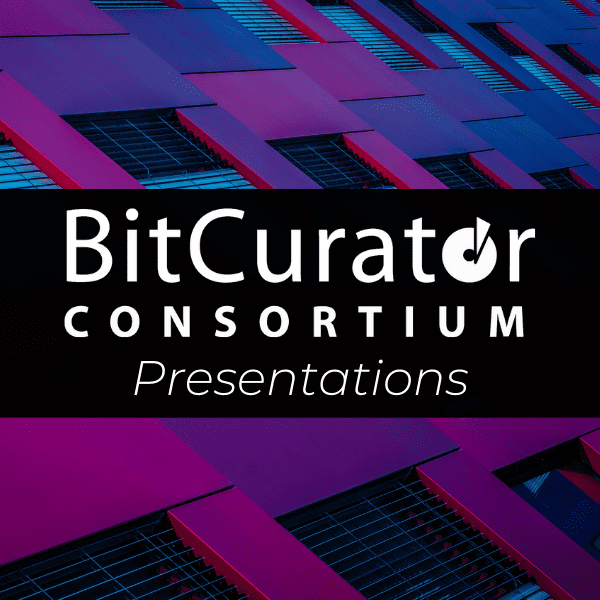Panel: Media
Dianne Dietrich, Alex Nelson, Jonathan Farbowitz, Flaminia Fortunato, Eddy Colloton, Caroline Gil | BitCurator Consortium
The Emperor’s New Grooves: Recognizing Multisession CD-ROM tracks not captured in disk images
This talk will focus on two related optical media format types that cropped up in the mid-1990s through the 2000s: Enhanced Music and MultiSession CDs. The Enhanced Music CD format (or CD-Extra, or CD-Plus) was found in multimedia releases of popular music albums and other multimedia content, while MultiSession CDs can be commonly found when sorting through personal collections, as so many of us once backed up our files on optical media. (Full disclosure: the authors admit that they have done this, too.) Each format poses challenges during the imaging and analysis process. Following a technical overview of both formats, we will discuss how to identify this type of material, including the types of results that are typically found when such discs are imaged using techniques designed for data CD-ROMs. This talk builds on work on Blue Book CDs reported by the OpenPreservation Foundation in 2017 on modifying existing image files to allow for navigation of the file system, and we aim to offer further analysis on strategies that allow resulting disk images to more fully integrate within automated processing workflows. We’ll go over tools suitable for imaging and analysis for when the original source media is still available, and techniques for post-imaging analysis when the source media is no longer available.
- Dianne Dietrich, Cornell University Alex Nelson, NIST
Disk Imaging and Digital Forensics in Media Art Conservation
Over the past several years, the prevalence of computer and software-based art in contemporary museum collections has prompted serious discussion and research, through various forums, symposia, and peer networks, to address the unique challenges in caring for these types of artworks. Within this context, media conservators have sought tools and techniques to deal with the urgent need to backup data from aging computers, hard drives, floppy disks, and optical discs in museum collections. One practice that is emerging amongst conservators, drawing from digital forensics and widely adopted by libraries and archives, is disk imaging. This panel will share the findings of a year-long cross-institutional collaborative examination of disk imaging between the Solomon R. Guggenheim Museum, The Museum of Modern Art and the Hirshhorn Museum and Sculpture Garden.
The panelists will address key issues including: 1. The development of practices and guidelines for condition-checking, quality control, and troubleshooting of disk images after their creation, and; 2. the difficulties of using a disk image to run a software-based artwork independent of the original hardware while ensuring a faithful representation of its core work-defining properties. Recognizing that the creation of a disk image is just one step at the beginning of an artwork’s preservation life-cycle, the panelists will engage in a frank and open discussion about their successes and failures with creating and managing disk images. This panel hopes to generate a dialogue which will continue to develop as conservators adopt and experiment with these methods.
- Jonathan Farbowitz, Guggenheim Museum
- Eddy Colloton, Hirshhorn
- Flaminia Fortunato, Museum of Modern Art
- Caroline Gil, Museum of Modern Art

Dianne Dietrich, Alex Nelson, Jonathan Farbowitz, Flaminia Fortunato, Eddy Colloton, Caroline Gil. (October 25, 2019). Panel: Media. BitCurator Consortium.